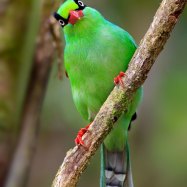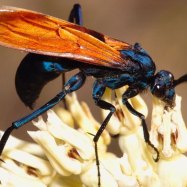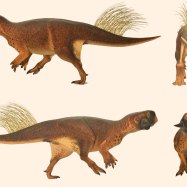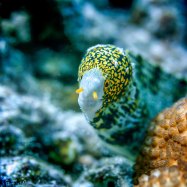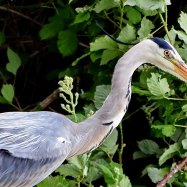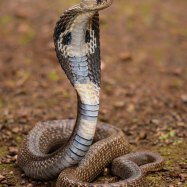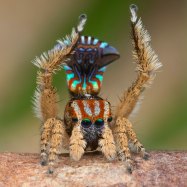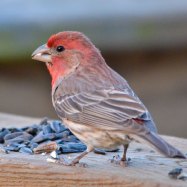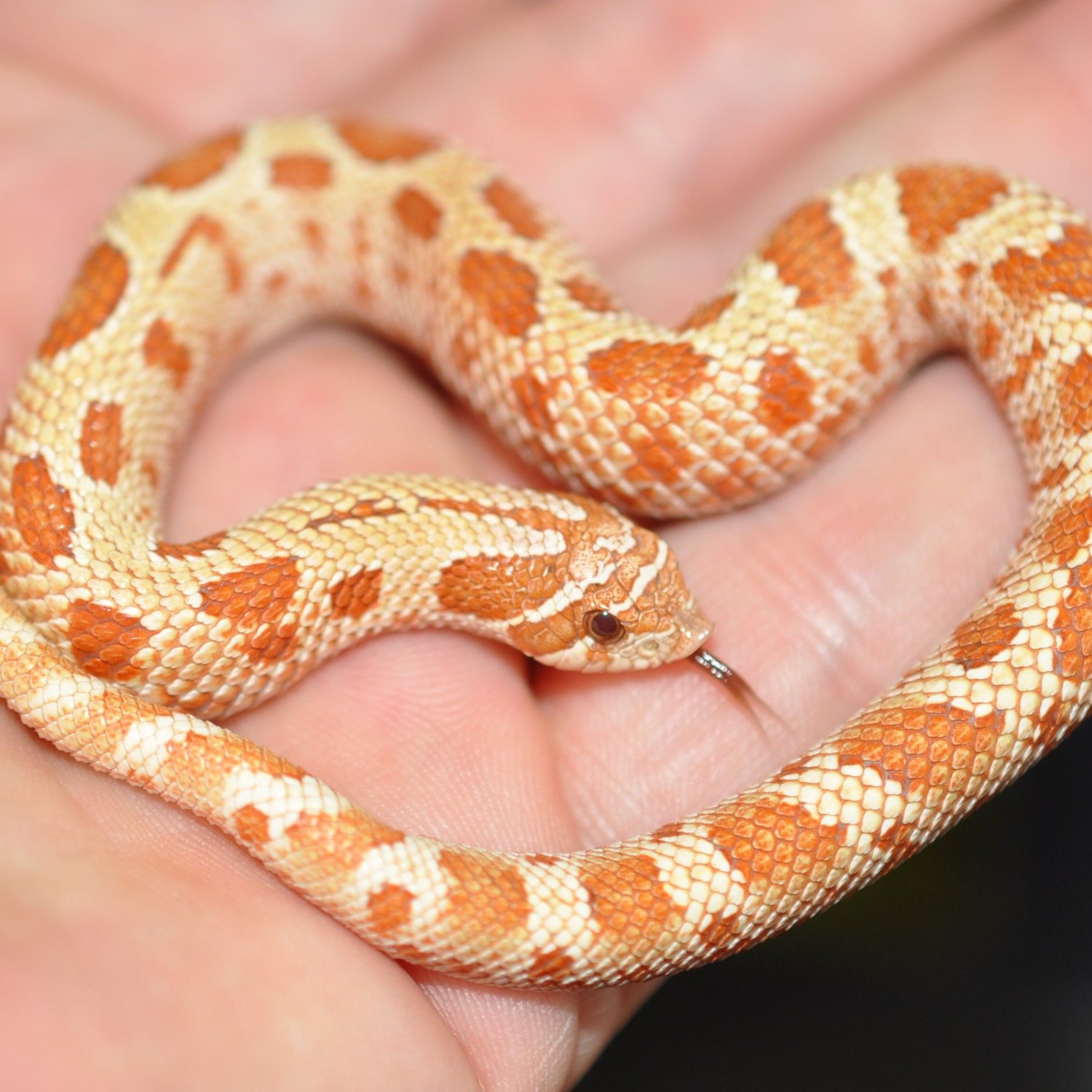
Western Hognose Snake
20-36 inches
The Western Hognose Snake, found in Central US, Canada, and Mexico, has a thick and stout body with an upturned snout. Growing up to 36 inches, these Colubridae family members are known for their harmless but dramatic defense tactics. As popular as their English names like Puff Adder suggest, these fascinating creatures deserve the spotlight for their unique features.
Animal Details Summary:
Common Name: Western Hognose Snake
Kingdom: Animalia
Habitat: Grasslands, prairies, deserts
The Fascinating World of the Western Hognose Snake
Have you ever heard of the Western Hognose Snake? If not, you're not alone. Despite its intriguing name, this reptile often goes unnoticed and underestimated. However, once you dive into the world of the Western Hognose Snake, you'll discover a fascinating creature with unique characteristics and behaviors. In this article, we'll explore the world of the Western Hognose Snake, from its physical features to its habitat and feeding habits, and learn why it deserves more attention and recognition Western Hognose Snake.The Anatomy of the Western Hognose Snake
The Western Hognose Snake, scientific name Heterodon nasicus, belongs to the kingdom Animalia and phylum Chordata. It is a member of the class Reptilia, and the order Squamata, which includes all lizards and snakes. Its family is Colubridae, which is the largest family within the order Squamata, and it is found in the grasslands, prairies, and deserts of North America.So, what sets the Western Hognose Snake apart from other snakes? Firstly, its body shape. This species has a thick, stout body with an upturned snout, giving it a unique appearance. It typically measures between 20-36 inches in length, making it a relatively small snake compared to other species. But don't be fooled by its size – the Western Hognose Snake is a powerful and agile predator. Its body is covered with keeled scales, giving it a rough and rigid texture.
Another distinguishing feature of the Western Hognose Snake is its coloration Wire Fox Terrier. It has a variable color range, but it is most commonly seen in shades of brown, tan, or gray, with dark blotches along its body. This coloration serves as camouflage, helping the snake blend in with its surroundings and remain undetected by predators.
Unique Behaviors of the Western Hognose Snake
The Western Hognose Snake is well-known for its unique behaviors, which make it a truly intriguing species. One of its most distinctive behaviors is its habit of playing dead when threatened. When facing a predator, the snake will hiss loudly, flatten its neck to appear more threatening, and sometimes even roll onto its back and play dead. This tactic is so convincing that it even produces a foul odor to further deter predators. This behavior has earned the Western Hognose Snake the nickname "puff adder" or "spreading adder."But playing dead isn't the only trick up the Western Hognose Snake's sleeve. If that tactic fails, it will resort to another strange behavior – flipping over onto its back and writhing around, exposing its underside. This behavior is meant to startle and confuse a predator, giving the snake a chance to escape. Additionally, the Western Hognose Snake has enlarged, rear-facing teeth that help it grip and subdue its prey, making it an efficient hunter.
Feeding Habits of the Western Hognose Snake
As a carnivorous species, the Western Hognose Snake primarily feeds on small mammals, such as rodents and lizards. It is not a constrictor like many other snake species – instead, it immobilizes its prey using a mild venom that aids in digestion. This venom is harmless to humans, but it can be deadly to small animals. The Western Hognose Snake is also immune to the venom of toads, which it often preys upon.One of the most interesting aspects of the Western Hognose Snake's feeding habits is its ability to specialize in a particular food source. For example, some individuals of this species may focus on eating frogs, while others may solely consume rodents. This adaptation allows the Western Hognose Snake to avoid competition for resources within its habitat.
The Habitat and Distribution of the Western Hognose Snake
The Western Hognose Snake inhabits grasslands, prairies, and deserts in North America, with a range that extends from the central United States to southwestern Canada and northeastern Mexico. It is primarily found in open, arid environments but can also be found in wooded areas and even near water sources.Within its preferred habitat, the Western Hognose Snake will often seek out areas with loose soil, making it easier for them to burrow and hide. These areas are also home to the snake's preferred prey, making it an ideal hunting ground. However, due to habitat loss and degradation, the Western Hognose Snake is facing a decline in numbers and is now considered a threatened species in some regions.
The Role of Western Hognose Snakes in the Ecosystem
Like all creatures, the Western Hognose Snake plays a vital role in maintaining balance in its ecosystem. As predators, they help to control the population of small mammals and other prey species, ensuring that their numbers do not become excessive and negatively impact the environment. Additionally, the Western Hognose Snake's diet consists mostly of toads, which are known to consume crop-damaging insects, making them valuable to farmers.Encounters with Humans
The Western Hognose Snake may not be as well-known as other snake species, but it has been gaining popularity as a pet in recent years. Despite its venom, it is considered a gentle and docile snake, making it an ideal pet for beginner reptile owners. However, owning a Western Hognose Snake requires specialized knowledge and care, and it is illegal to own one in some regions, so always check with local laws and regulations before considering it as a pet.In the wild, the Western Hognose Snake rarely poses a threat to humans. It is a shy and non-aggressive species that will typically retreat when faced with humans. However, as with all wild animals, it is important to respect their space and not approach or handle them.
Conclusion: Discover the Beauty of the Western Hognose Snake
The Western Hognose Snake may not be as majestic or well-known as other snake species, but it is undoubtedly a fascinating and unique creature. Its physical features, behaviors, and role in the ecosystem make it a truly intriguing animal. As their numbers continue to decline due to habitat loss and degradation, it's essential to appreciate and protect this incredible species.If you ever have the chance to encounter a Western Hognose Snake in the wild, take a moment to appreciate its beauty and observe its behaviors – you never know what interesting antics it may pull out of its bag of tricks!

Western Hognose Snake
Animal Details Western Hognose Snake - Scientific Name: Heterodon nasicus
- Category: Animals W
- Scientific Name: Heterodon nasicus
- Common Name: Western Hognose Snake
- Kingdom: Animalia
- Phylum: Chordata
- Class: Reptilia
- Order: Squamata
- Family: Colubridae
- Habitat: Grasslands, prairies, deserts
- Feeding Method: Carnivorous
- Geographical Distribution: North America
- Country of Origin: United States
- Location: Central United States, southwestern Canada, northeastern Mexico
- Animal Coloration: Variable; typically brown, tan, or gray with dark blotches
- Body Shape: Thick-bodied and stout with an upturned snout
- Length: 20-36 inches
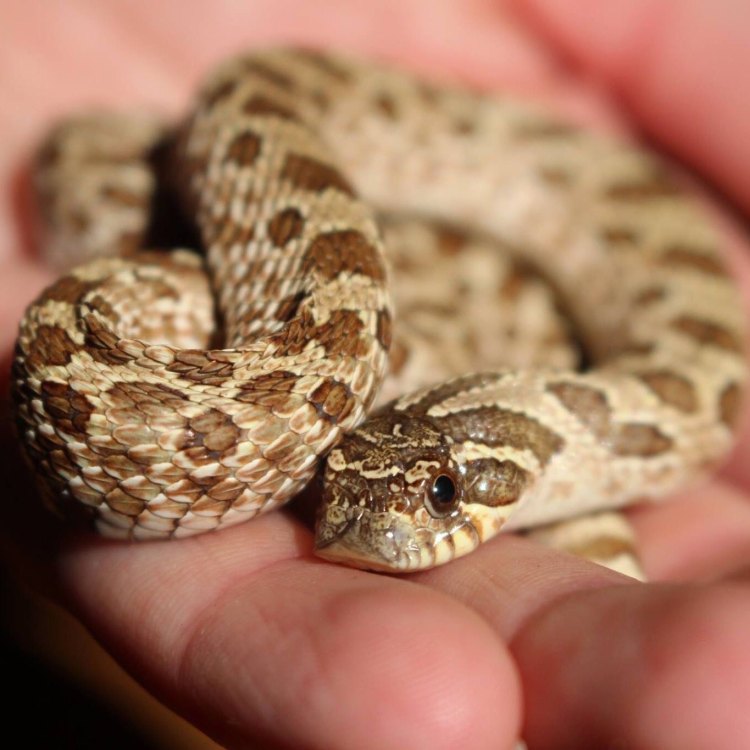
Western Hognose Snake
- Adult Size: 2-3 feet
- Average Lifespan: 10-15 years
- Reproduction: Sexual
- Reproductive Behavior: Mating occurs in spring, females lay eggs
- Sound or Call: Hisses and flattens neck when threatened
- Migration Pattern: Non-migratory
- Social Groups: Solitary
- Behavior: Mainly diurnal, burrows in sandy soil
- Threats: Habitat loss, road mortality, persecution by humans
- Conservation Status: Least Concern
- Impact on Ecosystem: Controls rodent populations
- Human Use: Pet trade
- Distinctive Features: Upturned snout, enlarged rear fangs
- Interesting Facts: Western Hognose Snakes are known for their defensive behavior of feigning death
- Predator: Birds of prey, larger snakes
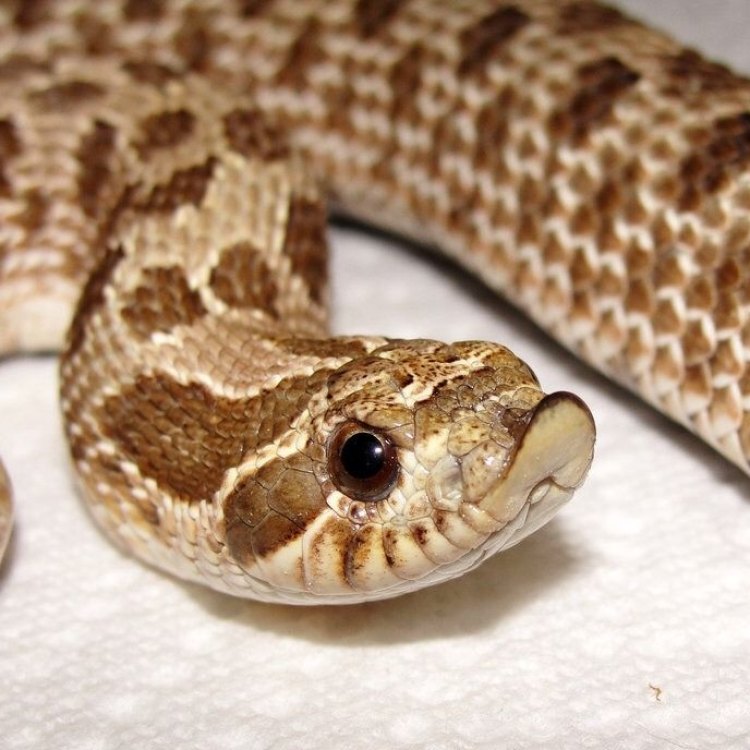
Heterodon nasicus
The Charming and Unique Western Hognose Snake: A Master of Adaptation
Nestled in the sandy soils and prairies of North America, the Western Hognose Snake is a captivating serpent with a distinctive upturned snout and enlarged rear fangs. With its charming demeanor and interesting behaviors, this snake has gained popularity as a pet, but its true value lies in its skills as a predator and its vital role in maintaining ecological balance. Let's take a closer look at this fascinating creature and uncover why it is a master of adaptation.Originating from the Great Plains of North America, the Western Hognose Snake, or Heterodon nasicus, is native to the United States and northern Mexico PeaceOfAnimals.Com. They are also known as the "hognose," "hog nose," or "puff adder" due to their unique upturned snout. They are medium-sized snakes, typically measuring between 2-3 feet in length, with an average lifespan of 10-15 years in captivity. In the wild, they can live for even longer.
The Western Hognose Snake's reproductive behavior is sexual, with mating occurring in the spring. They are known for their elaborate courtship displays, where the male will engage in a "dance" to impress the female. Females then lay eggs in the late summer, typically between 5-25 eggs per clutch. Interestingly, these eggs have a soft, leathery texture and are often mistaken for bird eggs.
One of the most distinctive features of the Western Hognose Snake is their defense mechanism. When threatened, they will hiss and flatten their neck, making themselves appear larger and more intimidating to predators Water Vole. If this fails to scare off the threat, they will roll onto their backs, play dead, and even emit a foul-smelling musk to further discourage the predator. This behavior has earned them the nickname "zombie snake," as they seemingly come back to life after feigning death.
But the Western Hognose Snake's unique features and defensive behavior are not just for show. They are highly adapted to their sandy, grassland habitats and serve a crucial role in their ecosystems. Western Hognose Snakes are mainly diurnal, meaning they are most active during the day. They spend most of their time burrowing in the sandy soil, using their upturned snout to dig and search for prey.
Western Hognose Snakes primarily feed on rodents, such as voles, mice, and gophers, which they immobilize using their enlarged rear fangs. These fangs, which are positioned at the back of their mouth, are used to puncture the prey's skull and inject venom, which helps to subdue larger and more challenging prey. This unique adaptation makes Western Hognose Snakes efficient predators, playing a vital role in controlling rodent populations and maintaining balance in their ecosystems.
Despite their impressive adaptations, Western Hognose Snakes face many threats. Habitat loss, from agriculture and urban development, is a major concern for these snakes. This loss of habitat not only impacts the snakes themselves but also their prey, reducing their food source. Additionally, they are vulnerable to road mortality as they can often be found basking on roads or crossing them to reach new territories.
Unfortunately, Western Hognose Snakes have also faced persecution by humans due to fear and misunderstanding. This has led to illegal poaching and killing, ultimately putting their population at risk. Conservation efforts are in place to protect this species, and thankfully, they are currently listed as of "Least Concern" on the IUCN Red List of Threatened Species. However, continued efforts are crucial to ensuring their survival in the wild.
Beyond their ecological importance, Western Hognose Snakes have also found their way into the pet trade. Their unique appearance and charming demeanor have made them popular pets, but this can also have negative consequences. Not all Western Hognose Snakes are suitable for captivity, and their specialized diet and habitat requirements can be challenging for inexperienced owners. It's essential to thoroughly research and understand the care needs of this snake before bringing one home as a pet.
In conclusion, the Western Hognose Snake is a fascinating and unique species, perfectly adapted to its sandy, grassland habitats. With their distinctive features, interesting behaviors, and vital role in controlling rodent populations, they are a valuable member of their ecosystems. However, they face numerous threats, and it is crucial to educate and raise awareness about their importance to their habitats and the importance of conservation efforts. Let's continue to appreciate and protect this master of adaptation, the Western Hognose Snake.
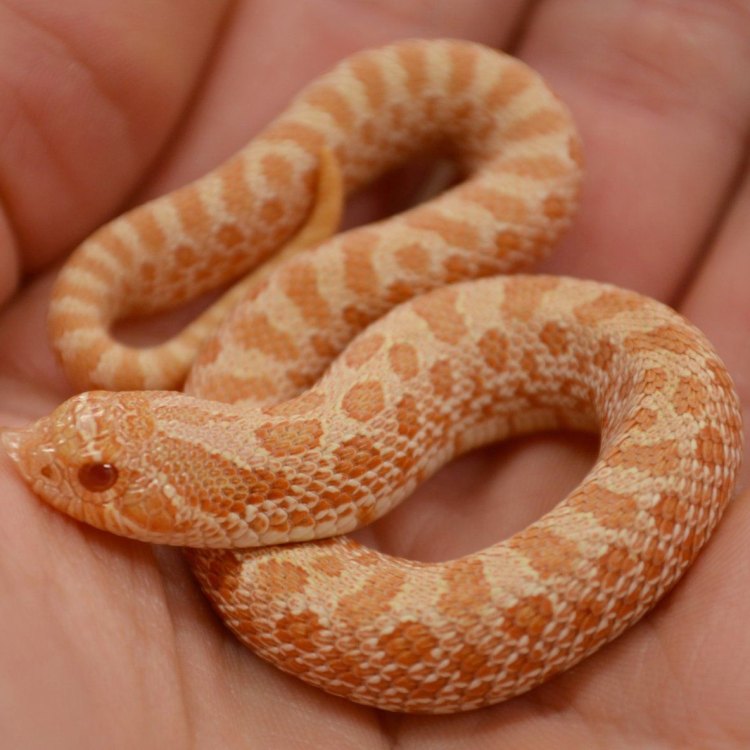
The Fascinating World of the Western Hognose Snake
Disclaimer: The content provided is for informational purposes only. We cannot guarantee the accuracy of the information on this page 100%. All information provided here may change without prior notice.

